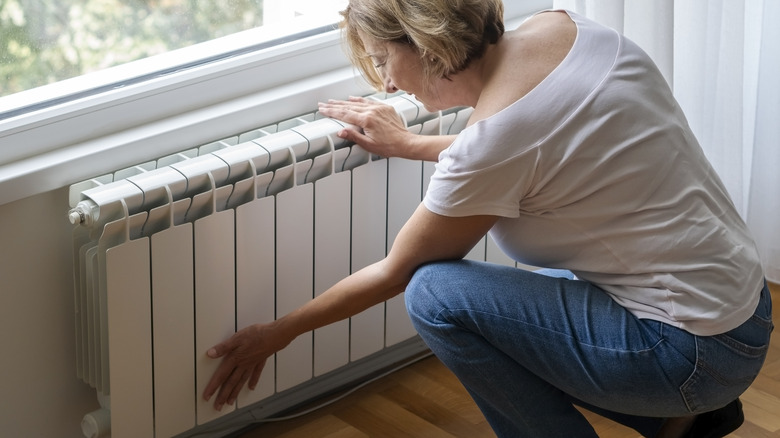Can You Move A Radiator To A Better Spot? What To Know Before Trying
For areas with year-round or seasonal cold weather, home radiators are vital in providing comfortable and reliable warmth. There are two types of radiators: the traditional model, which is connected to the central heating system, and self-contained electric units. Both generate heat that raises the temperature of the surrounding air, which circulates and warms the space. Because of a radiator's mounted installation and integration into the electrical or heating system, they are usually fixed to one place; however, they can be moved if need arises. Relocation requires specific planning and preparation to ensure proper dismantling and reinstallation, thereby avoiding any safety issues.
Radiators that are connected to a central heating system are called hydronic radiators and are composed of several components. The first is the radiator body, made of metal; it is the component that radiates heat in a room. Next are the pipes that transport the water and connect the boiler to the radiators. At the heart of the system is the boiler; it raises the water temperature, which is then circulated through the pipes by the pump. Because water in the system expands and contracts as it is heated and cooled, an expansion tank acts as the regulating component. Lastly, a thermostat functions as the temperature controller.
Due to these interconnected elements, an organized plan should precede any relocation. This minimizes the risk of damaging the radiator or other parts of the house, as well as preventing unintended plumbing problems. In addition, if done incorrectly, the efficiency of the heating system may be negatively impacted, raising electricity costs and requiring additional work or expensive repairs.
Planning is important before relocating
Important considerations when moving a radiator begin with taking measurements of both the relocation area and of the radiator itself. Next, check if the existing pipes can reach the new location; if not, determine how much additional pipe is needed. Once all the measurements are taken, the next step is to assess how to move or remove any obstacles, which can include structural sections, furnishings, or fixtures that might impede the relocation. Lastly, if the new position does not have an existing pipeline, you'll need to prepare a plumbing layout for relocating or creating pipelines, including tearing into the walls or flooring if the pipes are concealed.
With these considerations in mind, moving a radiator could possibly entail considerable work. Depending on the new area, the relocation may need new plumbing, additional plumbing, as well as leaving you with potential restorations to the original location. All of which can add to the plumbing and related expenses. If the reason you're moving the radiator is to provide heating in a specific area, a space heater could be a viable alternative, which would eliminate the need for the costly relocation. In addition, moving the unit carries the risk of damaging its components, and repairing a radiator comes with substantial cost.
It is possible to accomplish a DIY radiator relocation, but doing it properly requires knowledge, the right tools, and suitable materials. Because plumbing and heating systems are complex, the removal and assembly must be done correctly to avoid leaks and compromising the heating system. As an important appliance, the proper use and maintenance of a radiator is important to maintain its usability. If relocating the radiator proves difficult, it may be best to seek professional services to avoid potential issues.

